Old Cars, Fast Times
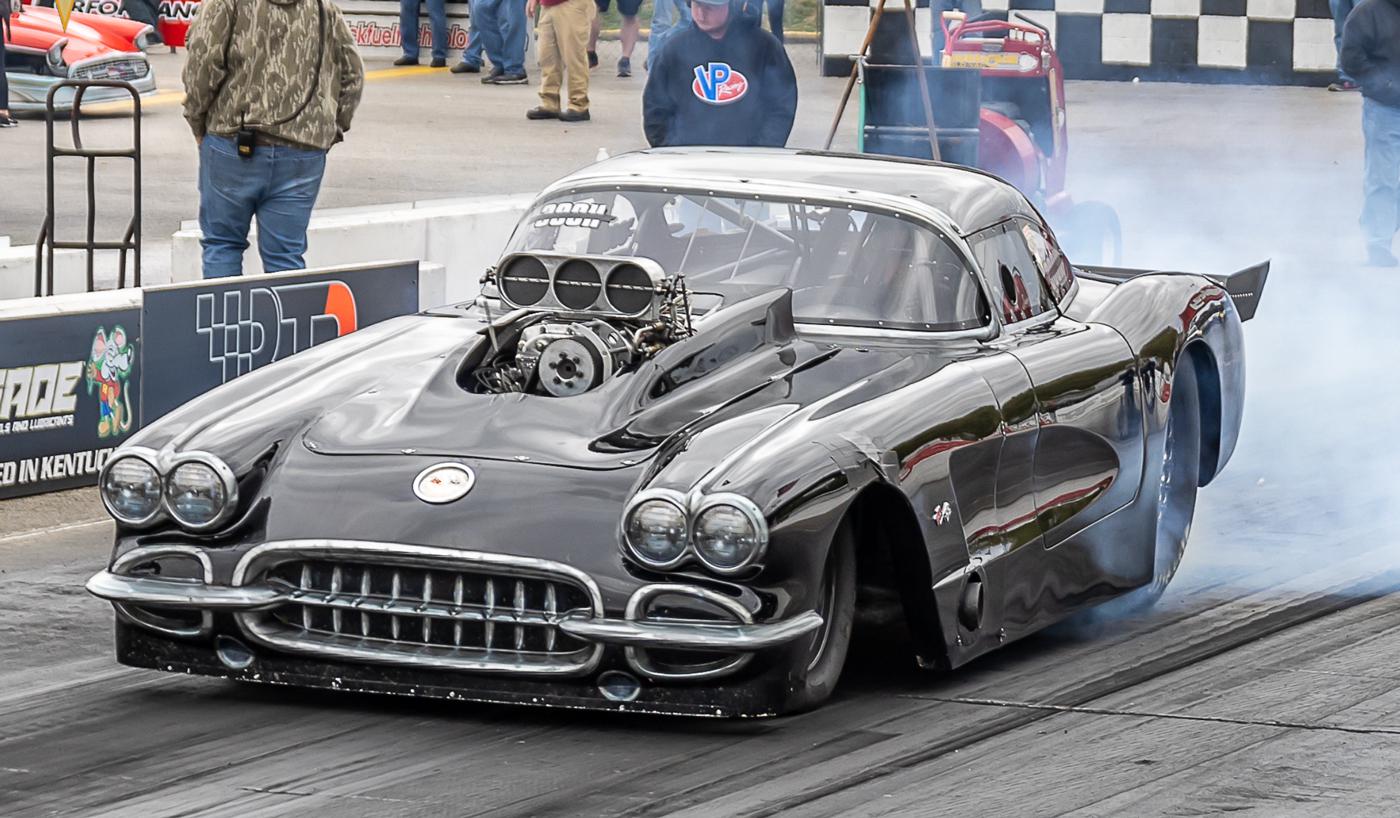
Photo courtesy of Nostalgia Drag Racing League
Nostalgia drag cars are getting faster and drawing bigger crowds, but is the rest of the industry paying attention?
Attending a nostalgia drag racing event may seem like stumbling into a time warp, but it would be wrong to assume that nostalgia racing is simply some sort of historical replay, like a Civil War reenactment on a battlefield. The cars keep getting faster, the crowds keep getting larger, and hidden yet modern technology is making the cars safer.
It’s a dynamic scene, but what does that mean for a motorsports industry that has traditionally preferred to look forward, not backward? Track-level anecdotes suggest there are plenty of opportunities for savvy racing suppliers to make inroads in this growing market.
Wayne Ramay of Performance Forge in Montebello, California, drives the fastest blown A/Fuel dragster in the nation. “Most classes have grown, although some have not. As for what is different today, the current racers seem to be more serious about performance, while two decades ago the early racers were more about barbeques and socializing,” Ramay reported. “The bracket classes, the slower classes, there seems to be a lot of growth in Nostalgia Eliminator, 7.0 Pro, the drag racing classes that race against an index, so it makes it a little easier to be competitive.
“Recently I’ve seen even Top Fuel and Funny Car growing,” he said. “Top Fuel had two fields at this last race, a top-half field and a bottom-half field. And Funny Car just had gobs of cars. There’s definitely some growth going on with people building cars. My class, unfortunately, A/Fuel, that’s not the case. We’ve shrunk a little bit, so not all the classes are growing, but a good majority of them are.”
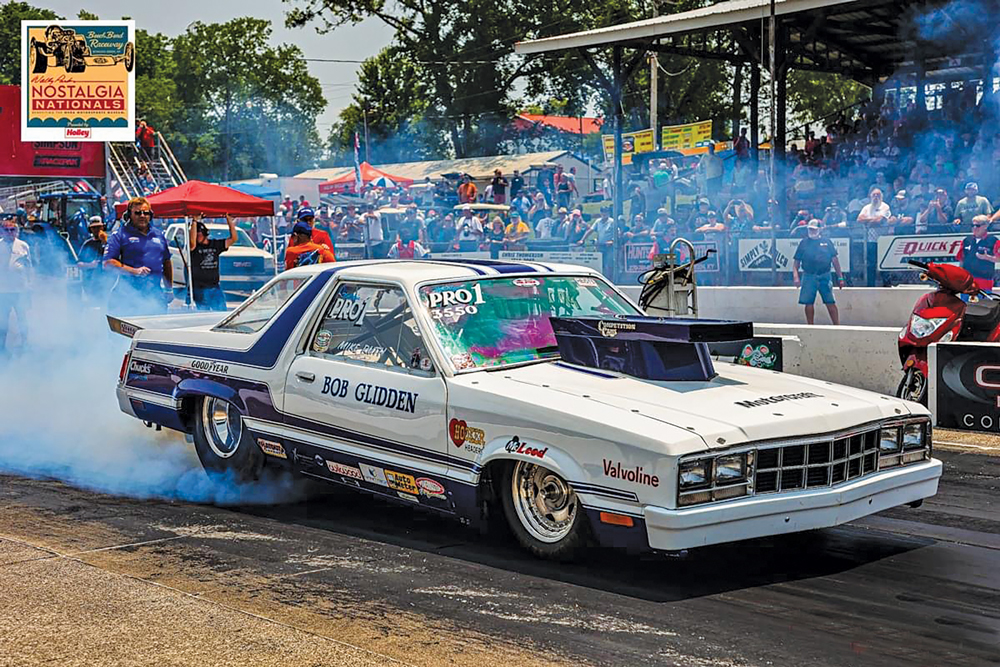
Nostalgia drag racing is steadily raising its profile among a more general automotive audience as well. In late November, “we were at the Muscle Car and Corvette Nationals, the largest indoor show of its kind in the country,” said Mike Ruth, who drives a Bob Glidden Ford Fairmont with the Midwest Pro Stock Association. The Muscle Car and Corvette Nationals is held every November in suburban Chicago, and features hundreds of the finest restored and original vintage muscle cars and Corvettes. “When I left after the show, the organizer shook my hand and said, ‘Your group, your display, was the talk of the whole show. You hit it out of the ballpark.’ We were mobbed the whole time.”
Speed and Balance
One thing keeping the sport interesting is that the cars keep getting faster. “I know we have increased significantly,” Ramay said. “Even just over the last five years, we’ve taken off another tenth or two-tenths of a second. It keeps getting faster. We made some rule changes last off-season to try and slow us down a little bit. I think people are afraid to join the class because it just looks like it has run away and it’s hard work and going to be hard to compete.”
Merritt Snyder, with the Pennsylvania-based Mid-Atlantic Nostalgia Drag Racing Association (MANDRA), has seen more cars hit milestone ETs. “I think we had more 8-second cars this year than ever before,” Snyder said. “At the end of the year we do acknowledge the low ET for the year. This year I believe there were at least four cars that had run 8-second runs. There have been a lot of years where there was only one person with an 8-second run. But they are not causing problems in the class. I did kind of see this coming when we passed 1982 [on MANDRA’s 40-year cut-off], because now all of a sudden, an ’82 Camaro Pro Stocker is a nostalgia car, theoretically.”
A major factor behind those quicker times is the adoption of modern speed parts. That creates a potential conflict in striking a balance between new-generation technology and true nostalgia, but the racers and organizations we spoke with didn’t see it as a problem.
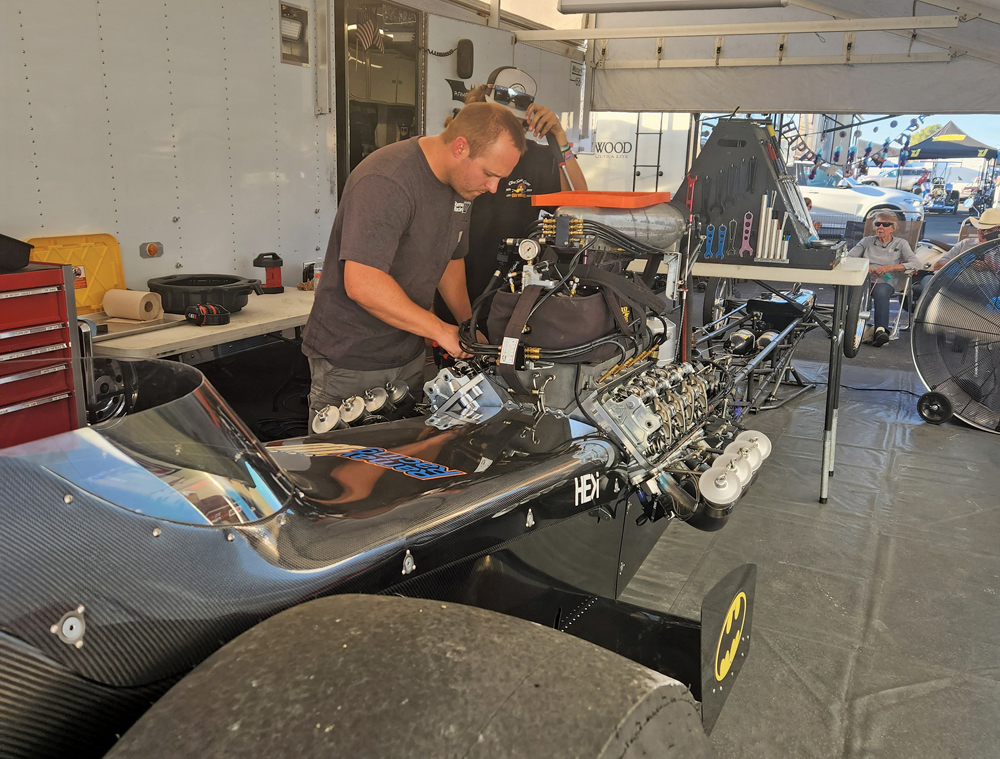
“Most of the changes we make don’t have an impact on the appearance,” Ramay said. “They’re much more hidden, like the transmissions or the torque converter, or internals to the engine that people aren’t seeing. There are some electronics on the car. We’re allowed to run electronics in my class. Learning how to get the most out of those electronics is just something that we learn. Some people are better at that than others, and it maybe shows in their performance a little bit.”
Ramay pointed out an example of hidden parts on his car that improve performance but don’t ruin the nostalgic affect. “I’ve got some brand new pistons that are a new, recent design,” he said. “They’re using them in Top Alcohol Funny Car and Top Alcohol Dragster. It’s a great design that really stabilizes the piston. I’ve started running those in my car and it’s really helped.”
Butch Hill, with the Nostalgia Drag Racing League (NDRL) in Mooresville, Indiana, acknowledged some concessions that have been made in incorporating modern technology. “We have let Grids into the program. Guys can now use an electronic Grid. But that Grid can’t control the car going down the track. It can control the car in the pits, and you can set your timing and so forth in the pits, but you can’t have things like traction control to control the time on the track,” he said. “With that, we’re trying to stay true to the old way as best we can with the technology that’s out there.”
Safety, of course, is a primary reason for incorporating newer parts that aren’t strictly period correct. “My car, originally when it was raced in 1979, did not have a Funny Car cage in it. Because I’m going faster than what the rules require, we put one in,” Ruth said. “A lot of the guys did that. Most people don’t even notice. I have a little bigger wing on my car than was used back then. The big thing that they notice is the bodywork—the tires and the wheels, the hood scoop, and the wheelie bars. The fans want to see the period-correct hood scoops, they want to see tunnel ram carburetors, the big Holleys, and they want to see the Lenco transmission.”
Fortunately, safety upgrades in the nostalgia ranks haven’t been controversial. “They’re definitely doing restrictions, whether it’s fire suits or SFI tags on wheels. If you go too fast, they’re most definitely making more requirements on us for safety,” Ramay said. “And none of us really fight that. I have a beautiful two-piece fire suit that’s good for the next five years, but it’s not good after the first of the year. My class now requires a one-piece suit. So I went out and bought one. It’s just part of the deal.
“I actually have a spreadsheet for my car that lists every piece of safety equipment on the car, who made it, what the number is, and when it’s due for recertification, so I don’t lose track,” he added.
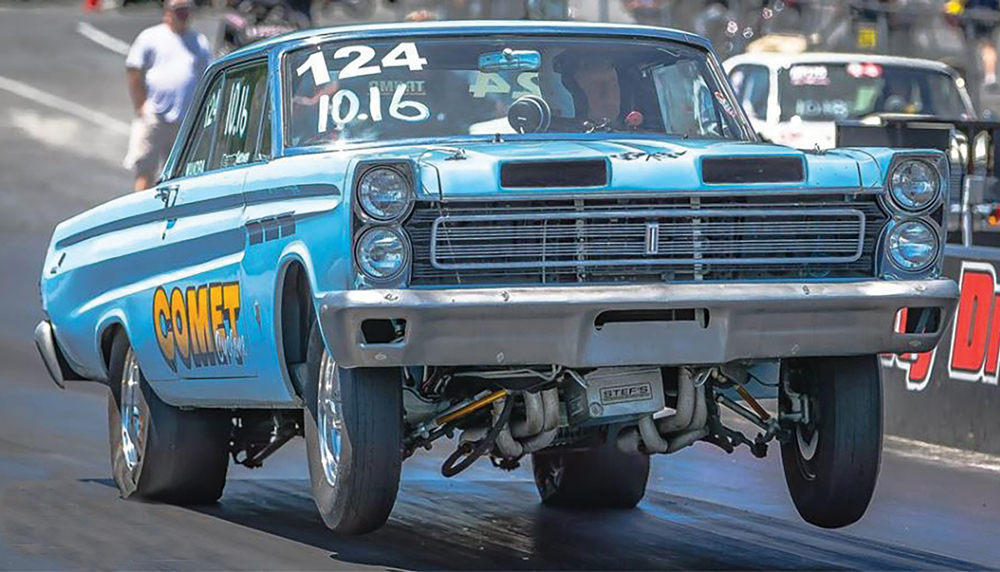
“Our rules, as far as the safety part of it, are extremely strict,” Ruth said. “All of our cars are NHRA certified. All of our drivers are NHRA licensed. We had HANS devices long before anybody thought about having them. There are fire extinguishing systems in the cars. We’re all about safety. Nobody wants to get hurt or hurt anyone. The caliber of cars in this group is top-notch. They’re all high-dollar cars driven by people who have been driving these things for 20, 30, 40 years.”
If striking a balance between modern parts and nostalgia appearance hasn’t been too much of a challenge, the bigger adjustments surround generational issues. After all, what qualifies as “nostalgic” is a matter of perspective. “The age group is changing. The nostalgia guys are nostalgia. The age group is higher,” Hill said. “At some point we’re going to have to move it up just to keep the crowd involved and keep the car counts up.”
One of the boundaries in nostalgia drags is the shift from carburetion to fuel injection in production vehicles and race cars, and all the technology associated with EFI. But it is inevitable that as the EFI cars age, they’ll become an increasing part of the nostalgia scene. “The 1995 car used to be brand new, and now it’s considered more of a nostalgia car, an antique vehicle. We keep going forward with these things,” Ruth said. “Originally it was all 1960s and ’70s cars. I’m of that era. I remember Bill Jenkins and Sox and Martin, all of that. But you get a guy that’s in his 30s or 40s? He doesn’t know who they are. That was way before his time. So we have it all. We’re doing everything from the 1960s up to the mid-1990s. I think we’re doing something right. We have more bookings than we know what to do with.”
For MANDRA, flexibility with rules is one way to attract new competitors to the sport. “A problem that we really do see is getting younger members, because it takes significant money to get an older car and get it back in good condition and prepare it for racing. That’s a problem,” Snyder said. “What we’re trying to do is be a little more lenient on rules. Ten years or so ago, if a car had an aero scoop or a wing, no chance. Now we’re kind of going by the three strike rule. If you have a car that has an aero scoop, a wing, and 33-inch tires, we’re probably going to turn you down. But if your car has a wing, and this guy has an aero scoop, and everything else is okay, yeah, we’ll overlook that. We don’t want to chase people away.”
Open for Business
With the growth in nostalgia racing, there are opportunities for aftermarket companies. It’s not hard to make a case that nostalgia drag racing is an underserved market.
“Watching a lot of drag racing this weekend as it finished up its season of the Big Show stuff, we don’t have a fraction of the advertising,” Ramay said in November. “People are just not marketing to us as racers, for whatever reason. I don’t know if it’s their view of nostalgia racing, what they think that is, from years ago maybe? Years ago, it was a bit different. In fact, they’ve recently changed the name of the last nostalgia race of the year, the Hot Rod Reunion, because they didn’t want it to be a reunion anymore. They want it to be a race.
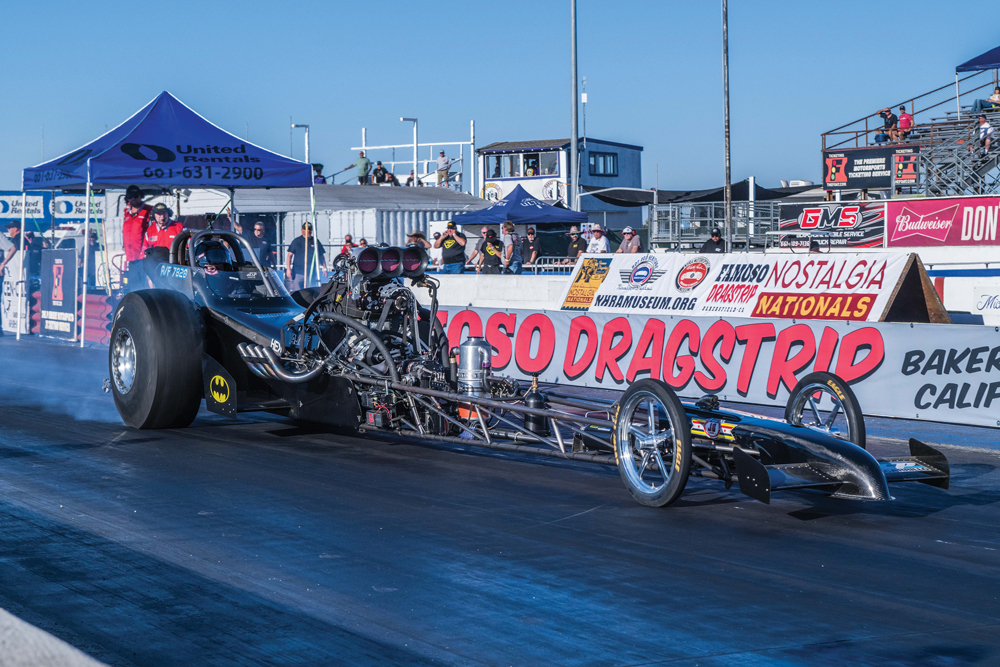
“Most of our cars, with the exception of some of the slow classes, are all brand new. There’s nothing old on my car,” Ramay continued. “I’m not racing an old car with a picked-up, warmed-up old engine. Mine has a brand new Alan Johnson billet Hemi in it and the best parts you can buy anywhere. It’s not that you have to have old parts to sell to us.”
When it comes to both the drivers and the audience, there is considerable crossover between nostalgia racing and a more current, mainstream racing market. “The way I look at it, every guy that’s in nostalgia racing, a lot of them have a more modern race car as well,” Hill said. “When they’re not racing with NDRL, they’re racing in another program of some sort that’s the modern EFI type stuff.”
Some of the names that served the racing market when these vintage cars were new are discovering opportunities once again as the cars age into the nostalgia ranks. “I’ve had several really good conversations and meetings with the lady who runs Hairy Glass. Back in the day, that was where everybody got their fiberglass,” Ruth said. “She’s actually giving the guys a discount, and she’s selling the stuff. As more people start to build these cars, why not? She has the original molds for, say, a 1979 Camaro or all the Glidden cars except for mine—they started with Glidden with the EXP. It’s really good stuff, and she’s noticed an uptick.”
The view from the track is that nostalgia drag racing has a long way to go before peaking. “We’ve had a lot of people who’ve come up and shown us pictures on their phone and tell us, ‘Hey, I’ve got this Comet that I’m doing,’ or ‘I’ve got this Chevelle, I’ll be out next year,’” Ruth said. “Whereas a couple of years ago, everybody was saying, ‘Nah, it’s too expensive,’ or ‘It’s a fad, it’s going to go away.’ Nostalgia is not going to go away. Not just racing, but everything. Everybody thinks that whatever it was back when they were a teenager or 20 years old, that was the best. So why not ride the wave if you can? We’re about giving everybody a good time and letting them relive what they feel were the best years of their lives.” For nostalgia drag racing, the best years may still be ahead.
Sources
Mid-Atlantic Nostalgia Drag Car Association
mandraracing.com
Midwest Pro Stock Association
facebook.com/MidwestProStockAssociation/
Nostalgia Drag Racing League
nostalgiadragleague.com
Performance Forge/Wayne Ramay
performance-forge.com
 MEMBERSHIP LOGIN
MEMBERSHIP LOGIN JOIN PRI
JOIN PRI


